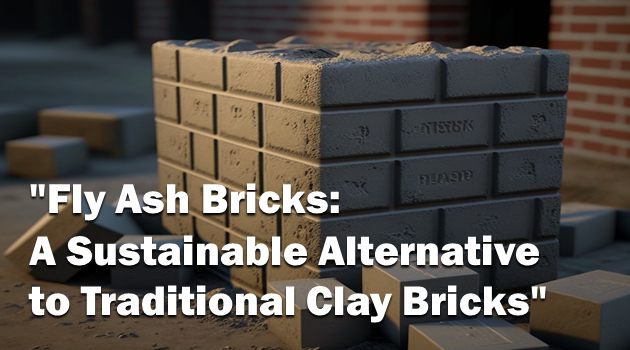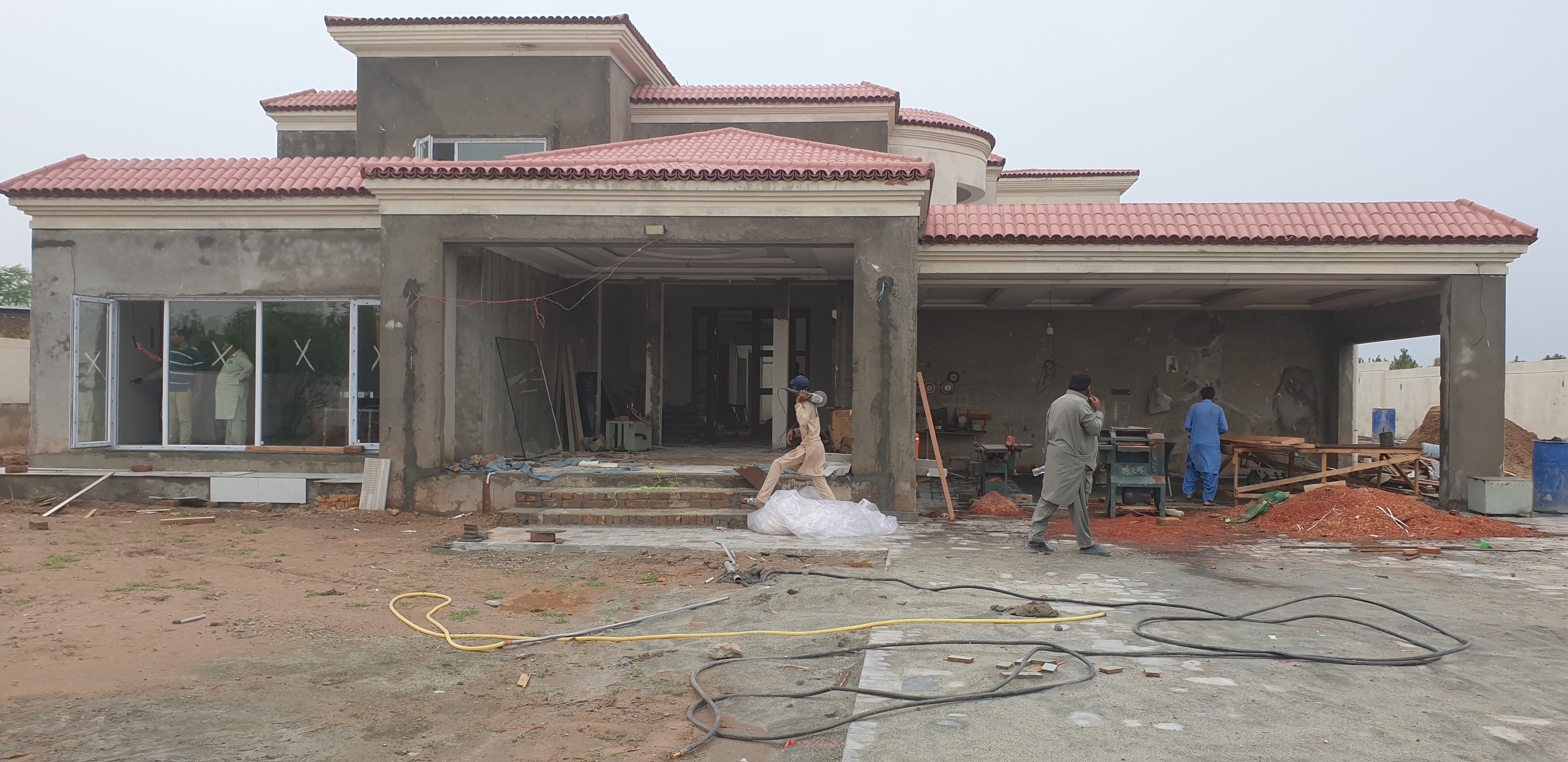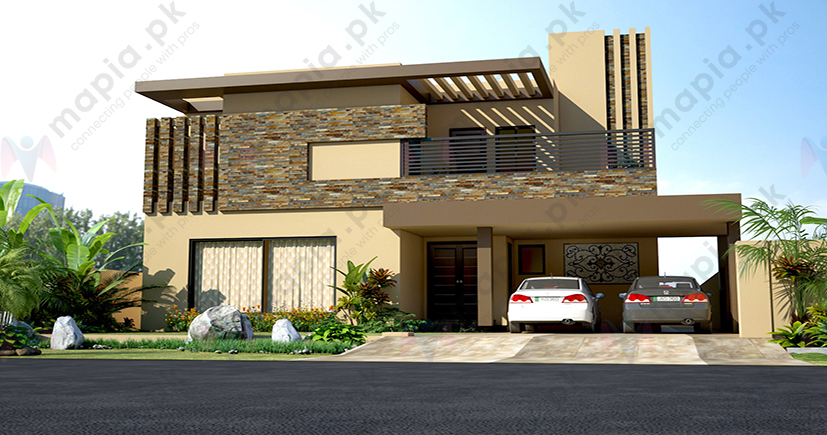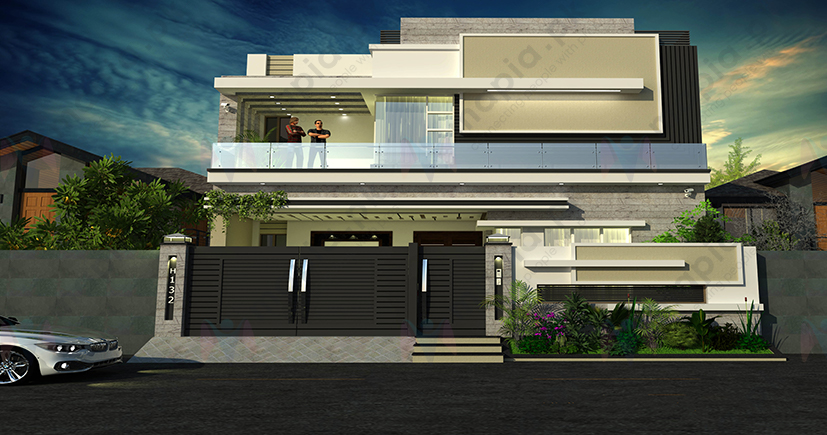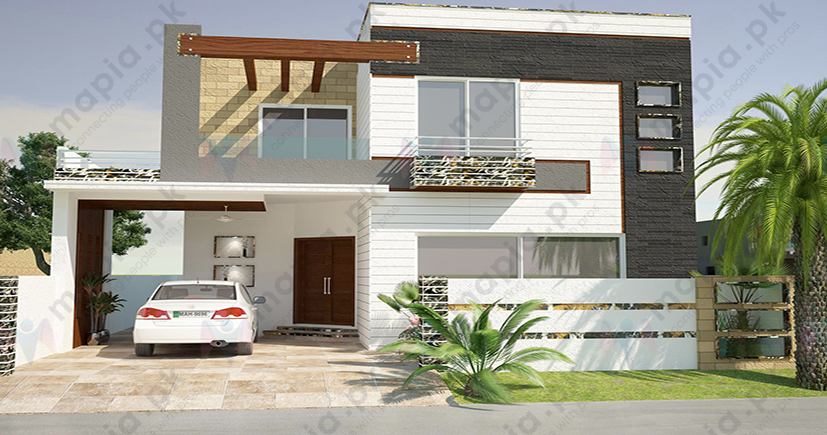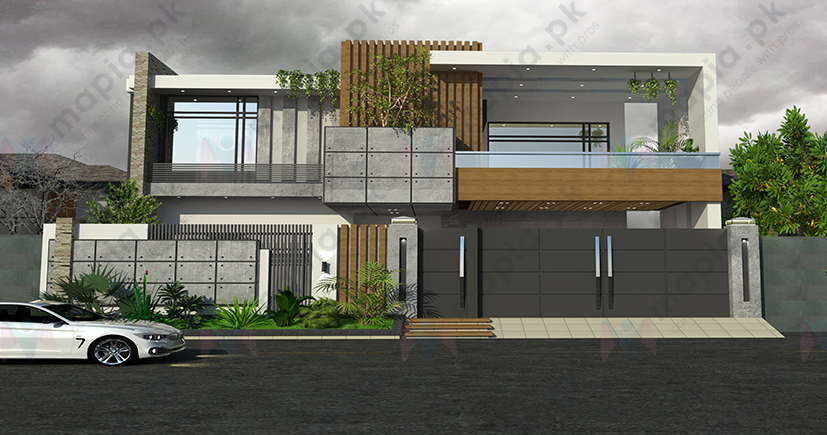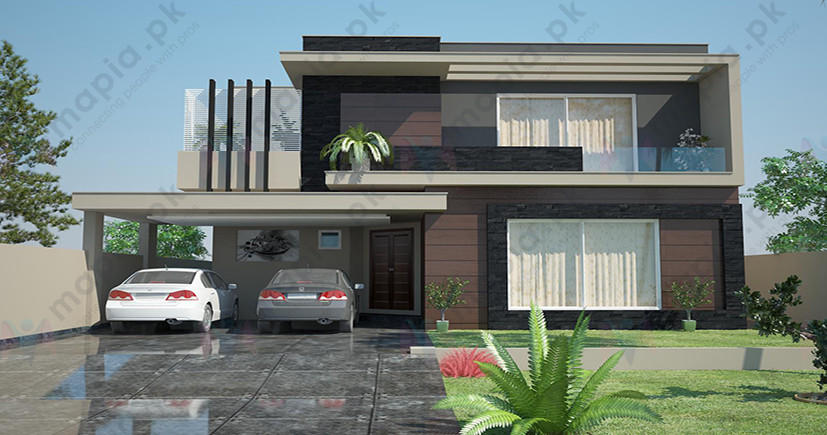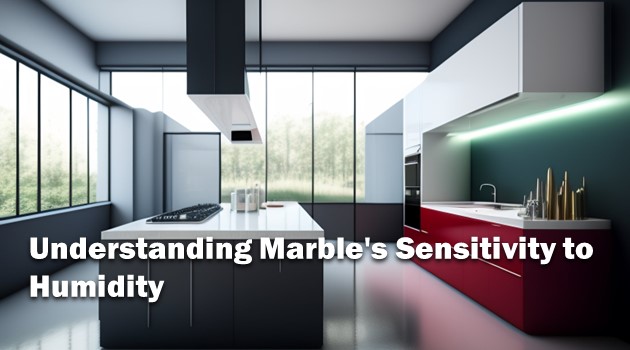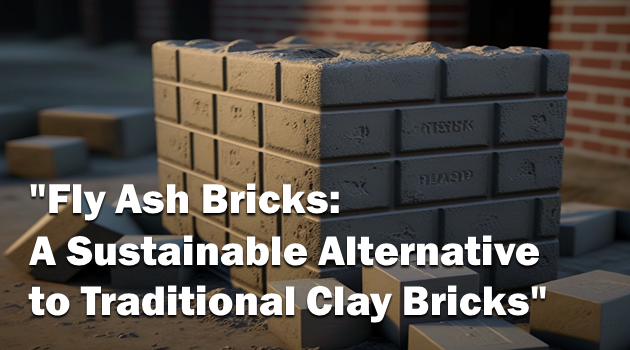
Fly Ash Bricks: A Sustainable Alternative to Traditional Clay Bricks in Construction
Fly ash bricks are a type of brick made from fly ash, a byproduct of coal-fired power plants. These bricks are an eco-friendly and sustainable alternative to traditional clay bricks, which are made from natural resources that are becoming increasingly scarce. They are a popular building material in many parts of the world, particularly in areas where there is a high availability of fly ash, a byproduct of coal-fired power plants.
Let's expand our understanding of this subject together and discover something new.
Fly ash bricks are made by mixing fly ash, cement, sand and water to create a slurry, which is then molded into the desired shape and allowed to harden. The resulting bricks are strong, durable, and lightweight, making them an ideal building material for both residential and commercial construction projects.
There are a few different methods for manufacturing fly ash bricks. One method involves mixing the fly ash, cement, and sand together with water and then pressing the mixture into molds to form the bricks. Another method involves mixing the fly ash with a small amount of water and then adding the mixture to a machine that compacts it into bricks.
In order to ensure that the fly ash bricks meet certain standards and specifications, it is important to use high-quality fly ash and to follow proper manufacturing techniques. Fly ash bricks should be cured properly in order to achieve their full strength and durability.
Fly ash bricks are used in a wide range of construction projects, including the construction of residential and commercial buildings, roads, and other infrastructure. They are particularly popular in areas where traditional clay bricks are in short supply or where the cost of transportation is high.
One of the main benefits of fly ash bricks is their environmental impact. Clay bricks require a significant amount of energy to manufacture, as they must be fired in kilns at high temperatures. This process releases carbon dioxide and other greenhouse gases into the atmosphere, contributing to climate change. In contrast, fly ash bricks do not require firing, resulting in a significantly lower carbon footprint.
In addition to their environmental benefits, fly ash bricks also have a number of other advantages. They are resistant to weathering, meaning they are less prone to cracking or breaking in extreme temperatures. They are also resistant to fire and insects, making them an ideal choice for buildings in areas prone to these hazards.
Specifications of Fly Ash Brick
Fly ash bricks have a number of specific characteristics that make them useful for a variety of construction applications. The specifications of fly ash bricks can vary depending on the manufacturer and the specific application. Here are some general specifications that are commonly used for fly ash bricks:
Size:
Fly ash bricks are typically available in standard sizes, such as 9 inches by 3 inches by 4.5 inches or 4 inches by 2.5 inches by 9 inches, as well as customized sizes for specific applications.
Compressive strength:
Fly ash bricks have a compressive strength that is typically in the range of 9.6 to 15 MPa (1,400 to 2,200 psi). This is similar or higher than the strength of standard clay bricks, making fly ash bricks suitable for use in load-bearing walls and other structural applications.
Water absorption:
Fly ash bricks have a low water absorption rate, typically in the range of 5 to 10%. This makes them resistant to water damage and suitable for use in damp or humid environments.
Density:
The density of fly ash bricks can range from 1,300 kg/m3 to 1,800 kg/m3.
Thermal conductivity:
The thermal conductivity of fly ash bricks is typically in the range of 0.9 W/m2 to 1.05 W/m2
Hire Best Architects for your construction project in Pakistan. Click to create Project Inquiry.
Sound insulation:
The sound insulation of fly ash bricks is typically in the range of 45 dB to 50 dB.
Flexural strength:
The flexural strength of fly ash bricks is typically in the range of 3 MPa to 5 MPa.
Heat resistance:
Fly ash bricks can typically withstand temperatures up to 1,200 degrees Celsius.
Weight:
Fly ash bricks usually weigh between 3.1kg to 3.25kg
Color:
They comes in different colors including the standard color of grey; and red, brown and black.
Fire resistance:
Fly ash bricks are resistant to fire and are classified as non-combustible materials.
Chemical resistance:
Fly ash bricks are resistant to most chemicals and are not affected by acids, alkalis, or other corrosive substances.
It's important to note that these are general specifications, and the actual specifications of fly ash bricks may vary depending on the manufacturer and the specific application. It's always a good idea to check the specifications provided by the manufacturer or supplier before using fly ash bricks in a construction project.
Benefits of Fly Ash Bricks
Fly ash bricks offer several benefits over traditional clay bricks. They are generally stronger and more durable, and they have a higher resistance to water penetration. They also have a higher thermal resistance, which means they can help reduce energy costs for heating and cooling a building.
Good load-bearing capacity:
Fly ash bricks have a good load-bearing capacity, which makes them suitable for use in structures that require strong foundations. They can support the weight of heavy loads, such as floors and roofs, without cracking or breaking.
Good compressive strength:
Fly ash bricks have a good compressive strength, which makes them resistant to crushing and other types of structural damage. This makes them suitable for use in buildings that are subjected to heavy loads or high levels of stress.
Good thermal conductivity:
Fly ash bricks have a good thermal conductivity compared to traditional clay bricks, which makes them suitable for use in buildings that require insulation. They can help regulate the temperature inside a building, which can reduce energy consumption and improve the overall comfort of the building.
Sound insulation:
Fly ash bricks can help reduce the transmission of sound, which makes them suitable for use in buildings that require good sound insulation. This can be especially beneficial in multi-family dwellings or buildings with shared walls.
Durability:
Fly ash bricks are known for their strength and durability. They are resistant to weathering and do not crack or crumble, making them durable and long-lasting.
Environmental impact:
The use of fly ash in brick manufacturing can help to reduce the environmental impact of brick production, as it reduces the need for clay and other raw materials. Fly ash bricks also have a lower carbon footprint compared to standard clay bricks, as they require less energy to produce.
Environmental benefits:
Fly ash bricks are made from industrial waste, which reduces the amount of waste that ends up in landfills. In addition, the production of fly ash bricks requires less energy compared to the production of traditional clay bricks, which makes them more energy-efficient.
Sustainable:
Fly ash bricks are a sustainable building material because they are made from industrial waste and have a lower carbon footprint compared to traditional clay bricks. Using fly ash bricks in construction can help reduce the overall environmental impact of the building industry.
Appearance:
Fly ash bricks can be produced in a variety of colors, including red, brown, grey, and black. They have a smooth surface and can be molded into a variety of shapes and sizes to suit different design requirements.
Mortar Saver:
They require less mortar during construction and plastering which can further reduce construction costs.
Lightweight:
Fly ash bricks are lighter in weight compared to traditional clay bricks, which makes them easier to transport and handle during construction.
Versatility:
Fly ash bricks can be used in a variety of construction applications, including residential and commercial buildings, roads, and bridges.
Easy to work with:
They can be molded into a variety of shapes and sizes to suit different design requirements.
Low water absorption:
Fly ash bricks have a low water absorption rate, which makes them resistant to moisture damage. This makes them suitable for use in damp or humid environments.
Easy to clean:
Fly ash bricks have a smooth surface, which makes them easy to clean and maintain. They do not accumulate dirt or stains easily, and they do not require harsh cleaning chemicals to maintain their appearance.
Fire-resistant:
Fly ash bricks are resistant to fire, which makes them a safe choice for use in buildings. They are less likely to catch fire compared to traditional clay bricks, which can reduce the risk of fire-related damage in a building.
Non-toxic:
Fly ash bricks are non-toxic and do not release any harmful emissions during their production or use. This makes them a safe choice for use in buildings, especially for people with allergies or sensitivities to certain materials.
Non-shrinking:
Fly ash bricks do not shrink during the drying process, which makes them more stable and durable compared to traditional clay bricks. This can help reduce the risk of cracks or other types of damage in a building.
Non-corrosive:
Fly ash bricks are non-corrosive, which makes them resistant to corrosion and other types of chemical damage. This makes them suitable for use in buildings that are located in areas with high levels of pollution or other types of environmental stress.
Versatile color options:
Fly ash bricks can be produced in a variety of colors, which makes them suitable for use in a wide range of construction projects. This can help architects and designers create unique and visually appealing buildings.
In addition, the production of fly ash bricks generates significantly less greenhouse gas emissions than the production of clay bricks, as fly ash is a waste product that would otherwise be disposed of in landfills. The use of fly ash bricks also helps to reduce the demand for clay, which is a finite resource that is mined from the earth.
Disadvantages of Fly Ash Brick
Fly ash bricks have several disadvantages:
Appearance:
Fly ash bricks have a smooth, uniform appearance and may not have the traditional look of clay bricks. This may not be desirable for some construction projects.
Availability:
Fly ash bricks may not be readily available in all areas, as they require the presence of coal-fired power plants to produce the fly ash.
Finishing:
Fly ash bricks may require additional finishing, such as plastering or painting, to achieve a desired appearance or to protect against moisture.
Cost:
Fly ash bricks may be more expensive to produce than clay bricks, which can increase the cost of construction projects that use them.
Compatibility:
Fly ash bricks may not be compatible with certain types of mortar or cement, which can limit their use in certain construction projects.
Susceptibility to Damage:
Fly ash bricks may be more susceptible to damage from freeze-thaw cycles, acidic environments, and other weathering effects than clay bricks.
Limited Design Flexibility:
Fly ash bricks may be more difficult to shape or cut during construction into custom sizes or designs than clay bricks, which can limit their use in certain construction projects.
Limited Availability of Raw Materials:
Fly ash bricks require the presence of coal-fired power plants to produce the fly ash, which may limit their availability in certain areas.
Limited Recycling Potential:
Fly ash bricks may not be as easily recycled as clay bricks, which can impact their environmental sustainability.
Bonding with Concrete:
Fly ash bricks has lower bonding capacity then clay bricks due to its smooth surface.
In Summary:
Fly ash bricks are a sustainable, cost-effective and environmentally friendly alternative to traditional clay bricks, offering a range of benefits, including strength, durability, and thermal resistance, for builders and the environment. They are a viable option for a wide variety of construction projects, and their use in a variety of construction projects around the world is likely to continue to grow as awareness of their benefits increases.


